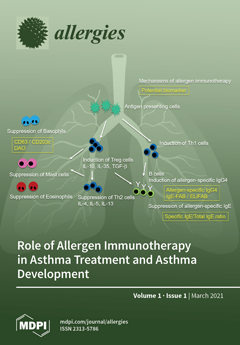Open AccessFeature PaperReview
Surgical Treatment for the Refractory Allergic Rhinitis: State of the Art
by
Antonino Maniaci, Milena Di Luca, Ignazio La Mantia, Calogero Grillo, Caterina Maria Grillo, Elio Privitera, Claudio Vicini, Giannicola Iannella, Claudia Renna, Vittoria Bannò, Francesca Migliore and Salvatore Cocuzza
Cited by 3 | Viewed by 10441
Abstract
Nasal obstruction is a frequent disorder that interferes with the daily patient’s quality of life. The key element in the pathophysiology of the disorder is the inferior turbinate hypertrophy related to multiple conditions such as allergic rhinitis (AR). Many patients are managed using
[...] Read more.
Nasal obstruction is a frequent disorder that interferes with the daily patient’s quality of life. The key element in the pathophysiology of the disorder is the inferior turbinate hypertrophy related to multiple conditions such as allergic rhinitis (AR). Many patients are managed using conventional drug therapies such as antihistamines, decongestants, and intranasal steroid sprays, anticholinergic agents, mast cell stabilizers, and desensitizing vaccines. When traditional therapy failed to relieve AR symptoms, surgical inferior turbinate reduction (ITR) is indicated. A vast variety of surgical techniques have been reported in the literature for AR such as resectioning, coagulating, and laser procedures. We aimed to revise all surgical options in AR management. We confirm that no ideal standard technique for turbinate reduction has been developed so far regarding the multitude of different surgical procedures. Furthermore, no prospective and comparable long-term studies are present in the literature; it is challenging to recommend evidence-based surgical techniques.
Full article
►▼
Show Figures



